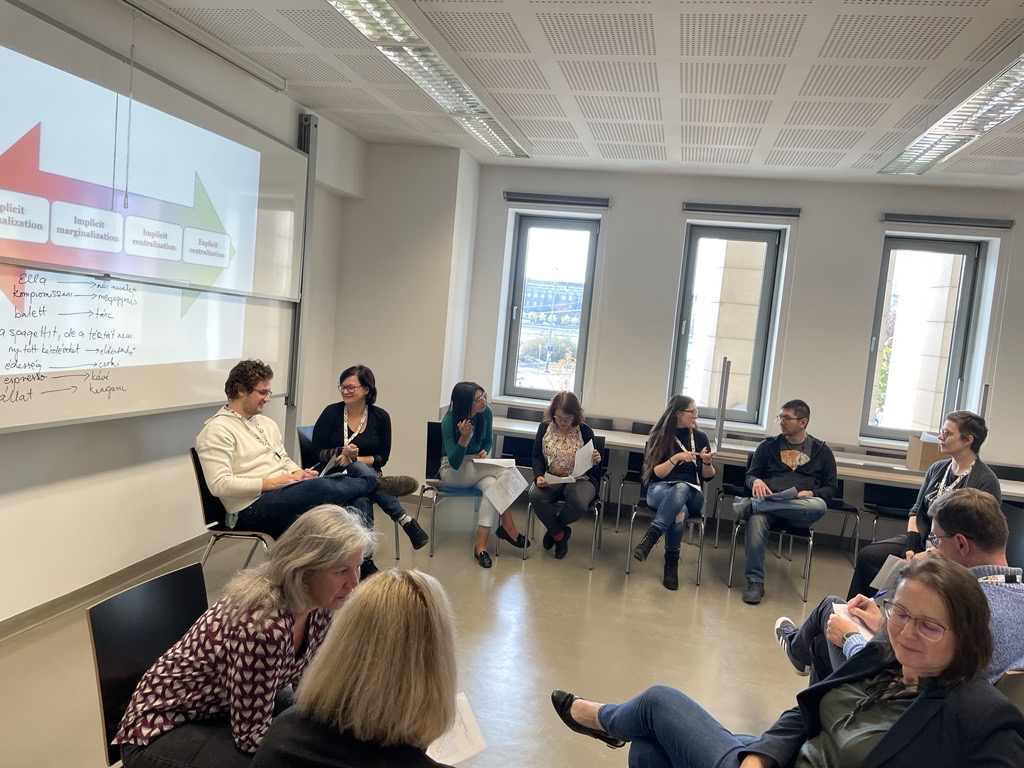What makes my classroom inclusive? A quick snapshot of the classroom atmosphere model

In line with the University’s Education Strategy, the Centre for Educational Quality Enhancement and Methodology (Centre for Teaching and Learning as of November), Student Support and the Science Shop work together to focus on the topic ’social inclusion’, and offer events and training for colleagues.
As part of this, a three-part series of events, launched on 17 October that focus on classroom teaching methodologies for social inclusion and ways to support specific student groups. During the first session, participants reflected on their own experiences and explore key concepts (inclusion, integration, assimilation, segregation and exclusion) through training methods, and then engaged in a dialogue on promoting the inclusion of international students and their classroom support, taking into account the University’s internationalisation goals. Good practices and dilemmas emerged during the discussions, and the importance of learning and student safety was shared by all participants.
The classroom climate model: marginalisation and centralisation
The workshop also introducedDeSurra and Church’s (1994) model of classroom climate to the participants, which outlines a spectrum ranging from active support for inclusion to overt and conscious exclusion. On this basis, the model distinguishes four phenomena in terms of attitudes towards inclusion and exclusion, namely:
- Explicit marginalisation (overt exclusion): This term describes situations where exclusion is explicit and visible. In such cases, certain groups of students may feel deliberately excluded, for example by having their opinions ignored, by having restricted access to certain activities or by negative labels being attached to their group.
- Implicit marginalisation (covert exclusion): In this form, exclusion is hidden and less intentional. For example, if the curriculum and lecturer communication focus predominantly on a particular culture or approach, students from other backgrounds may feel invisible, treated as outsiders – even though this intention is not explicitly expressed.
- Implicit centralisation (passive inclusion): In implicit centralisation, inclusion occurs in an unplanned way. For example, in a discussion about the lesson, one student may share their own experience from a different cultural background. Although such way of examining the course material was not originally intended,the lecturer provides space for the student to share their views.
- Explicit centralisation (active inclusion): Explicit centralisation is when the creation of an inclusive environment is consciously centralised and the lecturer does this in a way that is visible to all. A good example of this is when the lecturer openly communicates that diversity is a value and is reflected in their teaching practice. Another example might be when the curriculum includes works by authors from different cultural backgrounds and the assignments require a broad perspective. In such cases, each student feels that their perspective is important, so that inclusiveness becomes an organic part of the class.
It is important to note that the atmosphere model is interpreted on a group-by-group basis, so the atmosphere of a classroom can be actively inclusive for one group of students and exclusionary for another. The model provides a good starting point for reflecting on one’s own teaching and, within it, on verbal and non-verbal communication in the teaching situation. As a result of this reflection, it is also useful to identify opportunities for improvement and specific activities to support vulnerable groups of students.
To learn more about this model, see DeSurra, C. J., & Church, K. A. (1994) Unlocking the Classroom Closet: Privileging the Marginalized Voices of Gay/Lesbian College Students.
|
The series of workshops will continue for two more sessions in November: On 7 November, from 11:40-13:10, Brilliant Minds: Fostering Success for Neurodiverse Students will be hosting an experiential session entitled Egy sima egy fordított – Egyesület az inklúzióért. Start date: 7th November 2024 11:40-13:10 Location: 102 C Language: hungarian |
|
On 20 November, from 11:40-13:10, Removing Barriers: Building Inclusive Classrooms for Students with Disabilities, a member of the award-winning national and international Együttható Egyesület (Association Co-Efficient) will introduce participants to the opportunities of supporting students with physical disabilities. Start date: 20th November 2024 11:40-13:10 Location: Building C, Lecture VII Language: hungarian |
A sandwich lunch will be provided for participants at both events.